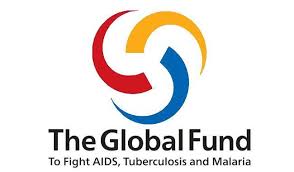An illustration of a pregnant teenager at school.
Lowering the heavy cost of teenage pregnancy could save lives and critical resources. According to the 22nd edition of the annual State of Uganda Population Report, Uganda could save more than USD184 million (on an annual basis) spent on health care for teenage mothers and the education of their children if more efforts were applied to significantly reduce teenage age pregnancy and its associated expenses.
The recently published State of Uganda Population Report among others emphasizes the importance of changing the population age structure to reduce the high child dependency burden.
Government efforts to harness the demographic dividend have registered significant progress over the years. The teenage pregnancy rate has declined from 31% in 2000 to 25% in 2018. The Fertility rate has also declined from 7.4 births in 1989 to 5.4 births in 2016.
As part of the response to the challenge of teenage pregnancy, interventions for supporting vulnerable Adolescent Girls and Young Women are guided by Uganda’s national age-appropriate service package in the AGYW strategy (2020-2025).
The Global Fund support has over time increased the number of districts with comprehensive AGYW activities from 31 to 39, to cover 64% of the highest-burden 61 districts in Uganda.
Among others, as part of Global Fund’s interventions, dialogue meetings with youth leaders have been held to address HIV and TB-related stigma, discrimination, and violence within communities to improve uptake and retention in care.
The Global Fund interventions have also supported Youth livelihood empowerment programs that integrate education on HIV, TB, and malaria-related stigma, discrimination, and violence reduction.
A report by the Ministry of Finance, Planning, and Economic Development indicates that teenage mothers are three times less likely to have professional jobs, while 47% are likely to end up being self-employed in peasant agriculture.
Related estimations by UNFPA (2022) show that about 60% of teenage mothers will end up in peasant agriculture, consequently leading to lower income levels among the girls, affecting their standard of living and overall contribution to productivity.
At the individual, household, and societal levels, teenage pregnancies can result in higher financial costs.
As a result, adolescent mothers were estimated to spend Shs791.5 billion on normal deliveries and care of newborns in the year 2019/20.
On the other hand, at the household level, families of all teenage mothers were estimated to have spent Shs1.28 trillion (290 million USD) on teenage mothers in 2020 Sexual Reproductive Health; and Shs246.9 billion (70 million USD) on health facility expenditure.
According to the Ministry of Finance, Uganda as a country is estimated to spend Shs645 billion (181.8 Million USD) annually on health care for teenage mothers and the education of their children.
Generally, unproductive/under-productive populations are an impediment to development and negative impact on realizing the Demographic Dividend.
Also, this has implications for achieving the SDGs, especially goals 1, 5, and 8 (ending poverty, gender equality, and productive employment and decent work respectively).
According to UNICEF, the consequences of teenage pregnancy to the mother are severe, including death which occurs during pregnancy and delivery. In 2016, for instance, teenage mothers contributed to about 30% of maternal deaths in Uganda (UBOS, 2018).




0 Comments